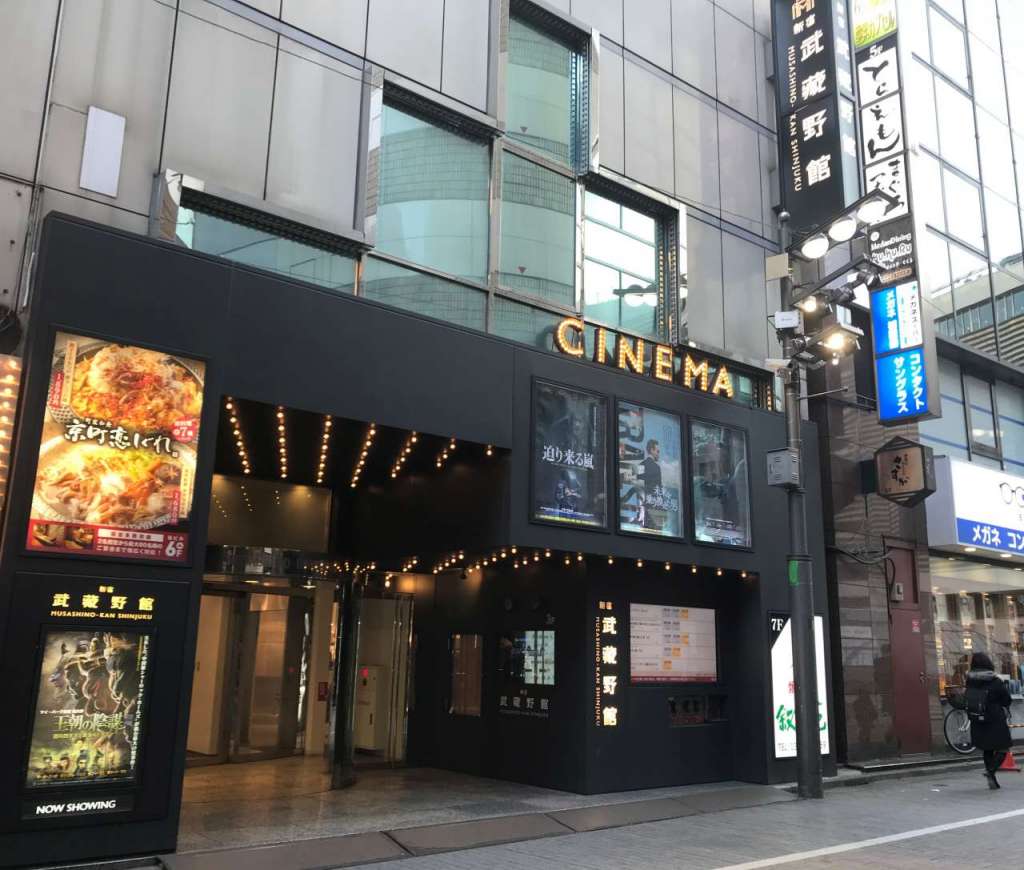“Tokyo Review 032” Shinjuku area-8
Shinjuku as a city of cinema and “Musashino-Kan”
Shinjuku Golden Gai has many “Literature Bars”, and among the regular customers concerning literature, there seems to be many people related to the movie industry. Shinjuku seems to already have established the image as the “city of cinemas”, similar to Hibiya.
In 1920, when Shinjuku still was on the fringe of Tokyo, shopkeepers in the town were arguing how they could make Shinjuku a cultural town which can be a destination for many people. Finally, they raised funds and opened a 700 seats movie theater at a site along Shinjuku-Dori Avenue (the site of BicQlo, used to be Mitsukoshi Shinjuku Store and Alcott). This is “Musashino-Kan”, a movie theater which soon received a reputation among fans for showing good movies. Especially after the Great Kanto Earthquake, as Shinjuku had less damage compared to the other downtown areas, the tickets were sold out almost every day at that time. It was still the era of silent films performed with subtitles. There was also an “Acting Narrator” who explained the situation of the scene. The classic music accompanied with the movie fascinated people as well.
Musashino-Kan moved to the east exit of Shinjuku Station in 1928. The theater boasted itself with a vaulted ceiling with an excellent acoustic performance and a seating capacity of 1,200. It was the first movie theater in Japan to have screened “Talky movies” in 1929. It became popular together with the Imperial Theater in Marunouchi (it was converted to a movie theater under Shochiku group at the time) and Daisho-kan theater in Asakusa. Besides, in Shinjuku at that time, there were theaters like Shin Kabuki-Za (1933-1960) and Moulin Rouge Shinjuku-Za (1931-1951). Cinemas, theaters and cafes, made the area considerably bustling.
Regarding the capacity of movie theaters in Hibiya and Shinjuku taking a look at TOHO Cinemas chain, TOHO Cinemas Hibiya which had opened in Tokyo Midtown Hibiya in March 2018, has 13 screens and 2, 800 seats (including 600 seats in the basement of Takarazuka Theater in the vicinity) and 25 wheelchair seats. TOHO Cinemas Shinjuku has 12 screens, 2, 323 seats and 24 wheelchair seats. Shinjuku has two other cinema complexes and six mini theaters. In addition to this, as I had introduced before, Tokyu Milano Project will create 8-screen cinema complex, which will bring the total number of screens to 48.
Can Shinjuku be a leading city of cinema in Tokyo? There is no doubt that the location is good. I think I can assure it if the cultural maturity of the surrounding cities is further enhanced, it will be a leading city.
